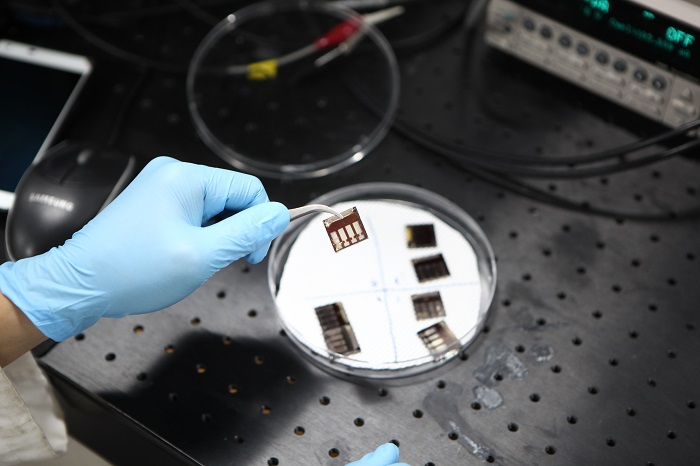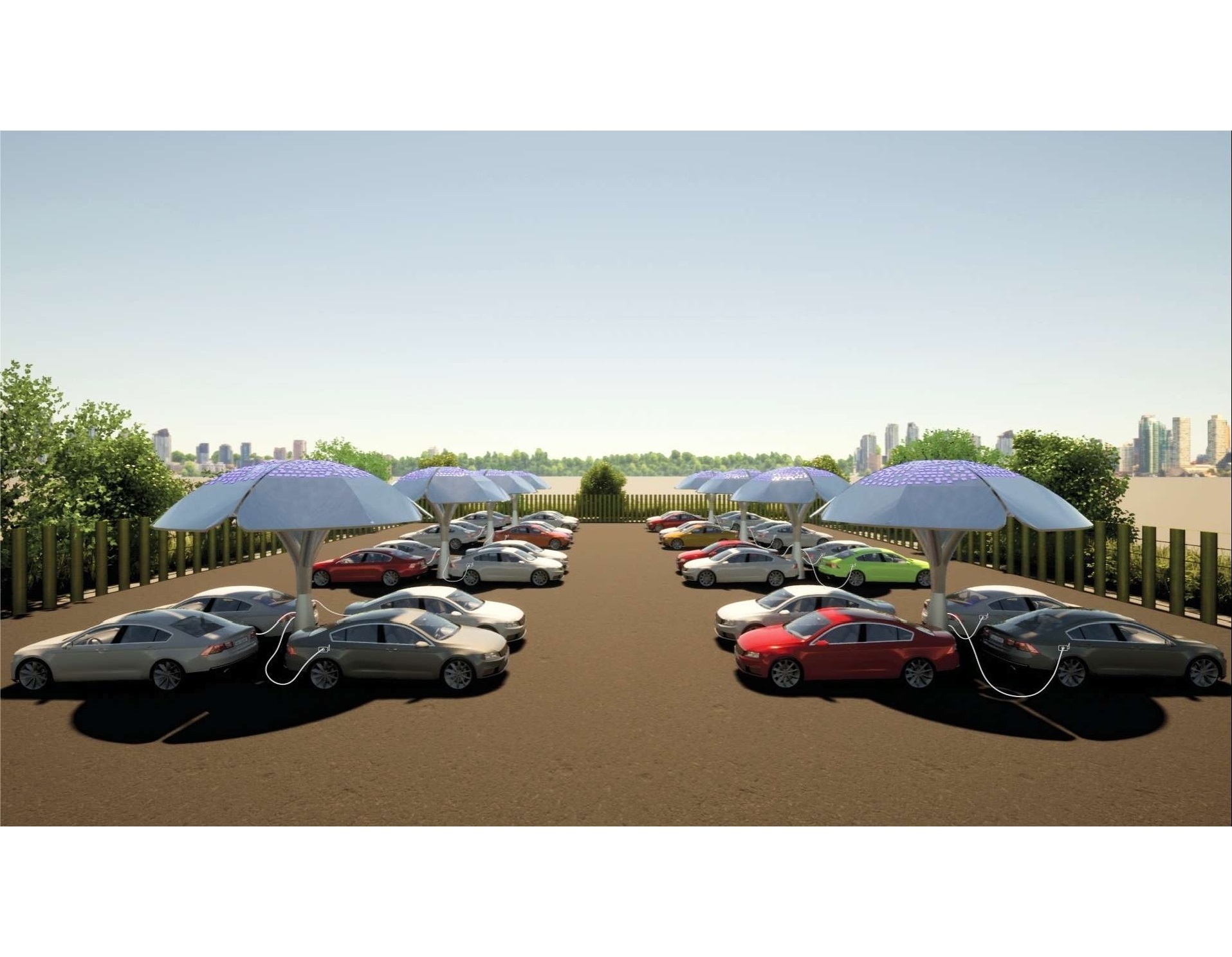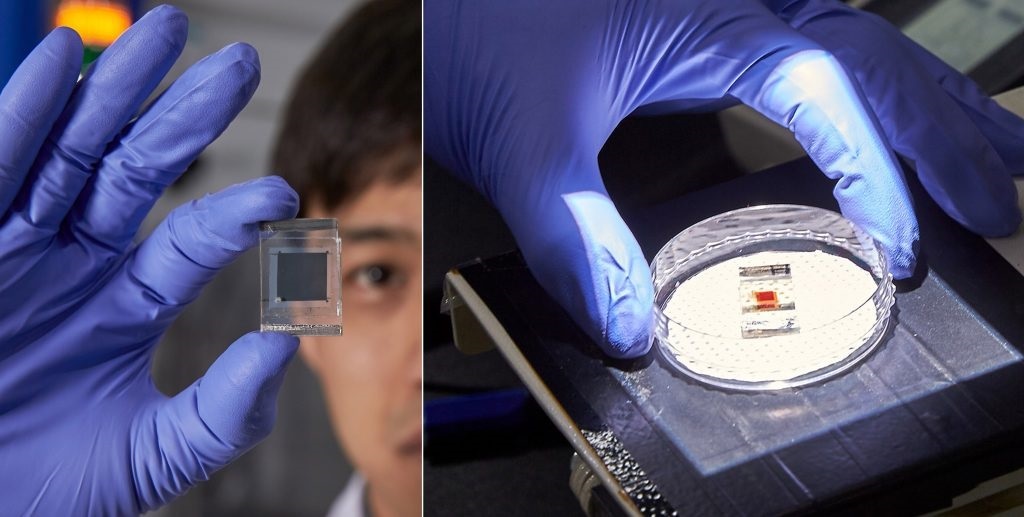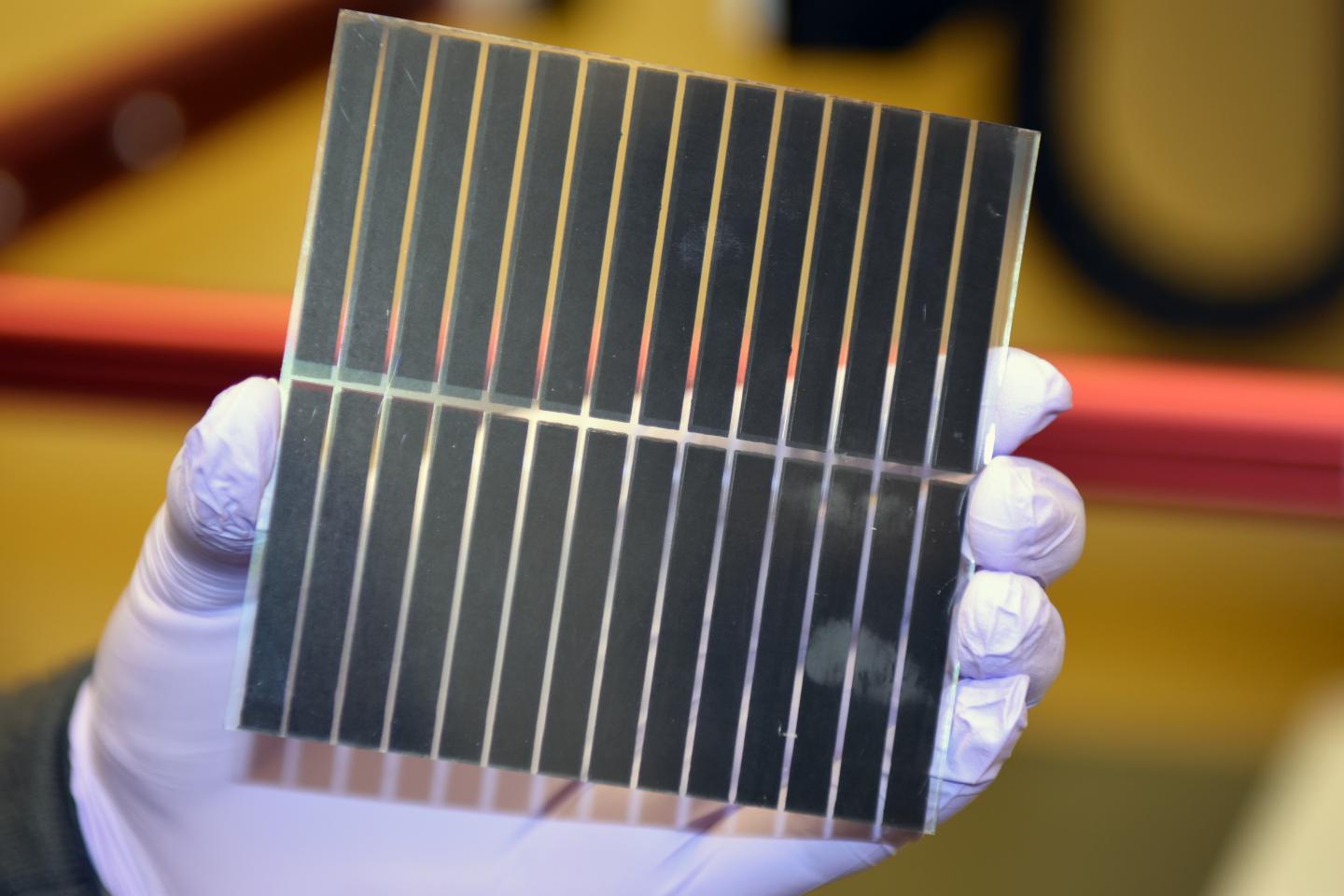2016.08.08
Solar energy is an expected source of energy that can play an important role in energy supply in the future of the world. As part of the response to changes in the environment due to global climate change, there is an ongoing effort to increase the proportion of power generation from renewable energy. It is expected that solar cells will take the largest proportion in such a flow. Recently, researchers have focused on organic-inorganic composite material having a perovskite structure that would allow low-cost and high-efficiency solar cell as a new photo-active material. Perovskite solar cells, one of the ten scientific breakthroughs in 2013, are in close proximity to the efficiency of crystalline silicon (~ 25 %) solar cells by the rapid improvement of the efficiency (from 2.2 % in 2008 to 22% in 2016). It, as next-generation solar cell with superior performance in low-cost materials that are based on cheap solution process, are expected to be able to replace the conventional silicon solar cells.
Perovskites are materials described by the formula ABX3, where X is an anion and A and B are cations of different sizes (A being larger than B). Perovskite which is used for solar cells has methylammonium in the A site, B site is lead or tin ion, and X site is composed of halide ions. It simply shows the following attractive properties as a photo-active materials; a bandgap of around 1.6 eV, high extinction coefficient, with long electron-hole diffusion length (0.1 ~ 1m). The most successful architecture of the perovskite solar cells has adopted the titanium oxide and the Spiro-OMeTAD(2,2′,7,7′-tetrakis(N,N′-di-p-methoxyphenylamine)-9,9′-spirobifluorene) as charge transfer layer. Despite the high efficiency, However, the current - voltage hysteresis (asymmetry result in current-voltage measurement between forward and revers scan) has dropped reliability of the device. Meanwhile, perovskite solar cells using PEDOT: PSS (poly (3,4-ethylenedioxythiophene) poly (styrene sulfonate)) and PCBM (phenyl C61 butyric acid methyl ester) also can be manufactured. Current-voltage hysteresis that reduces the reliability of the solar cells was significantly suppressed when producing a solar cell in this structure. Another problem of the perovskite solar cells is low stability. This material is highly vulnerable to moisture and heat. The efficiency of the solar cell can be rapidly decreased within a few hours to exposure in the air. Therefore, it is an important issue for practical use to improve the stability of the perovskite solar cells.
The researchers reported highly efficient perovskite solar cell based on chemically stable Nickel Oxide (NiO) with 16.40 % of power conversion efficiency by replacing PEDOT:PSS, organic charge transporting material. Although PEDOT:PSS has superior functionality to extract charges selectively from the perovskite layer, PEDOT:PSS promotes the decomposition of the perovskite which is moisture-sensitive due to its hygroscopic nature. On the other hand, nickel oxide, can improve the stability of the perovskite solar cells by retaining the chemical stability. Perovskite solar cells based on NiO, however, have suffered from relatively lower performance with smaller fill factor and photocurrent density compared to devices based on PEDOT:PSS. The researchers prepared the ultrathin NiO films (a few nanometers in thickness) deposited by atomic layer deposition (ALD) method for highly efficient perovskite solar cells. The Ultrathin Nickel Oxide showed an improved hole transport property compared to the bulk Nickel Oxide films. In addition to this, High transparency of such a thin nickel oxide helps the perovskite to exhibit the high power conversion efficiency. Further, the solar cell has maintained 90% of the initial efficiency over 500 hours when stored under inert gas atmosphere. The result is expected to be the basis for the development of highly efficient and reliable perovskite solar cell for future commercialization. The research was published in ‘Nanoscale’.













